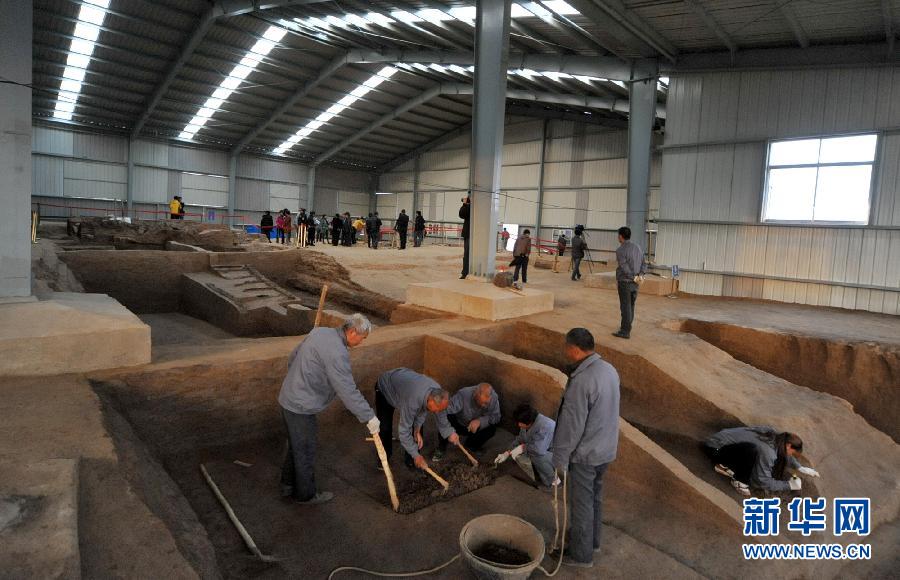 |
|
Tomb of Emperor Yang of Sui Dynasty. [File Photo/Xinhua] |
Tomb of Emperor Yang of the Sui Dynasty (AD 581-618) at Caozhuang in Yangzhou, Jiangsu province
The tomb was discovered at a construction site in Yangzhou, East China's Jiangsu province in 2013. It was a large earth mound 49 meters long from east to west and 48 meters wide from south to north. Under the mound, two burials were discovered.
A stone memorial tablet with the inscription "Sui Gu Yangdi" (deceased Emperor Yang of the Sui Dynasty) was found in burial M1, which proved its owner was Yang Guang, the second and last monarch of the short-lived Sui Dynasty.
Nearly 200 sets of burials offerings, including lion-shaped door knockers made of gold and iron and a jade belt decorated with gold, were unearthed, indicating the high status of the deceased.
The female deceased discovered in burial M2 under the same mound late proved be the queen of Emperor Yang.
The joint tombs offered material resources to the formation of advanced tombs in Sui and Tang dynasties. The high-standard burial goods from the tombs were extremely valuable to the study of history, politics, economy, and cultural of the Sui Dynasty.
According to historical material, Yang was killed during a mutiny in 618 AD, which marked the end of the Sui Dynasty.
Generally, Chinese historians say Yang's tyranny brought the Sui Dynasty (AD 581-618) to an end, but he also completed several great construction projects during his reign, including the Grand Canal and the reconstruction of the Great Wall.
Tomb of Emperor Yang of the Sui Dynasty in Yangzhou of Jiangsu province was listed as one of China's top 10 archaeological discoveries in 2013.